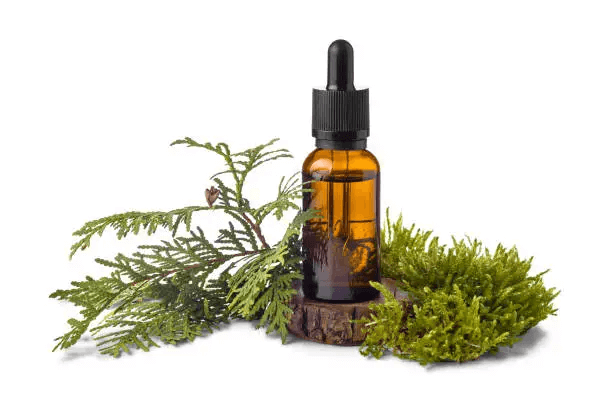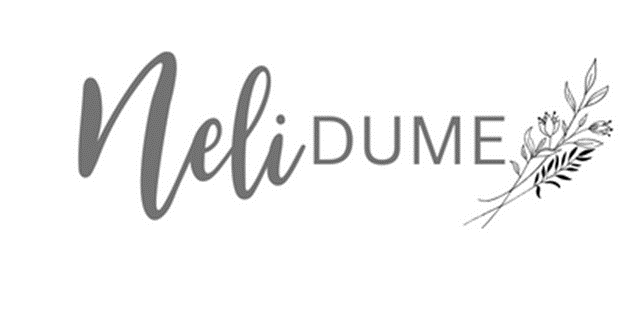
If you’re looking for an essential oil that works just as hard as you do — Cedarwood is it! This warm, woodsy oil isn’t just great for making your home smell amazing — it’s packed with incredible benefits for your skin, hair, emotions, and even your immune system.
1. Helps with Eczema and Skin Irritations
Cedarwood essential oil has soothing and anti-inflammatory properties that can calm down eczema flare-ups (1).
- Try adding a drop to your daily lotion, mixing it with a carrier oil, or tossing a few drops into a warm bath to ease the itch.
2. Promotes Hair Growth
Cedarwood stimulates hair follicles and improves circulation to the scalp. A study published in Archives of Dermatology showed that a blend of Cedarwood, Thyme, Rosemary, and Lavender essential oils improved hair growth by 44% in people with alopecia areata over seven months (2).
3. Soothes Dry, Flaky Scalp
Its antifungal and moisturizing properties (3) make Cedarwood a great natural remedy for dandruff. Mix Cedarwood with coconut oil, massage into the scalp, and leave on for about 30 minutes before washing.
4. Natural Antiseptic Power
Research shows Cedarwood oil has antimicrobial and wound-healing properties (4).
- Mix a few drops with coconut oil and dab onto cuts and scrapes.
5. Supports Arthritis and Joint Pain Relief
Thanks to its anti-inflammatory compounds (5), Cedarwood can ease joint pain.
- Massage diluted Cedarwood oil onto sore joints and muscles or add it to a warm bath.
6. Acts as a Natural Deodorizer
With its warm, grounding aroma and antibacterial properties (6), Cedarwood freshens up your home and eliminates odors.
7. Encourages Better Sleep
Studies suggest Cedarwood has sedative effects (7), promoting relaxation and improving sleep quality.
- Diffuse Cedarwood before bed for a deeper, more restful night.
8. Works as a Natural Diuretic
Cedarwood is believed to stimulate the urinary system, helping with fluid retention (8).
9. Boosts Focus and Helps with ADHD Symptoms
In one small study, inhalation of Cedarwood essential oil improved focus and learning in children with ADHD by 65% (9).
10. Eases Coughs and Respiratory Issues
When inhaled, Cedarwood’s expectorant properties can help clear up mucus and ease coughing (10).
11. Repels Bugs Naturally
Cedarwood oil has been shown to repel mosquitoes and other insects (11).
- Add to DIY sprays or use on cotton balls in closets.
12. Provides Stress Relief
Its calming effects can help ease anxiety and tension (12).
- Diffuse Cedarwood when you need to unwind.
13. Fights Fungal Infections
Cedarwood essential oil has antifungal properties effective against certain fungal infections (13).
Apply it diluted to problem areas to help clear up skin issues.
Cedarwood essential oil has antifungal properties effective against certain fungal infections (13).
14. Helps Clear Up Acne
Cedarwood’s antibacterial and sebum-balancing properties (14) make it great for reducing acne when added to skin care routines.
✨ How to Use Cedarwood Essential Oil
- Diffuse it: Add 4–6 drops to your diffuser for a warm, grounding aroma.
- Topical use: Dilute it with a carrier oil (like coconut or jojoba oil).
- Bath soak: Mix a few drops with Epsom salts and add to your bath.
- DIY blends: Add it to body lotions, deodorants, and hair masks!
- Direct inhalation: Inhale straight from the bottle or rub a drop between your palms.
- Spot treatment: Dab diluted Cedarwood oil onto blemishes, bug bites, or dry patches.
✅ Always test a small area of skin first to avoid any reactions.
Final Thoughts
Clearly, Cedarwood is a must-have oil for any natural health toolkit! Whether you’re looking to boost your beauty routine, ease stress, improve sleep, or freshen your space, this earthy powerhouse has got you covered.
Ready to start using Cedarwood in your daily life?
References:
- Han, X., Parker, T. L. (2017). Molecules.
- Hay, I. C., Jamieson, M., Ormerod, A. D. (1998). Archives of Dermatology.
- Benencia, F., Courrèges, M. C. (1999). Mycoses.
- Onawunmi, G. O. (1989). Fitoterapia.
- Juergens, U. R., Stöber, M., Vetter, H. (1998). Phytomedicine.
- Boukhatem, M. N., et al. (2014). Asian Pacific Journal of Tropical Biomedicine.
- Miyazaki, Y., Motohashi, Y., Kobayashi, S. (2011). Physiology & Behavior.
- Leung, A. Y., Foster, S. (1996). Encyclopedia of Common Natural Ingredients.
- Arnold, L. E., et al. (2001). Prostaglandins, Leukotrienes and Essential Fatty Acids.
- Karaman, S., et al. (2014). Journal of Inflammation Research.
- Zhu, J., et al. (2001). Journal of Medical Entomology.
- Setzer, W. N. (2009). Natural Product Communications.
- Ali-Shtayeh, M. S., Abu Ghdeib, S. I. (1999). Mycoses.
- Prashar, A., Locke, I. C., Evans, C. S. (2006). Toxicology Letters.



0 Comments